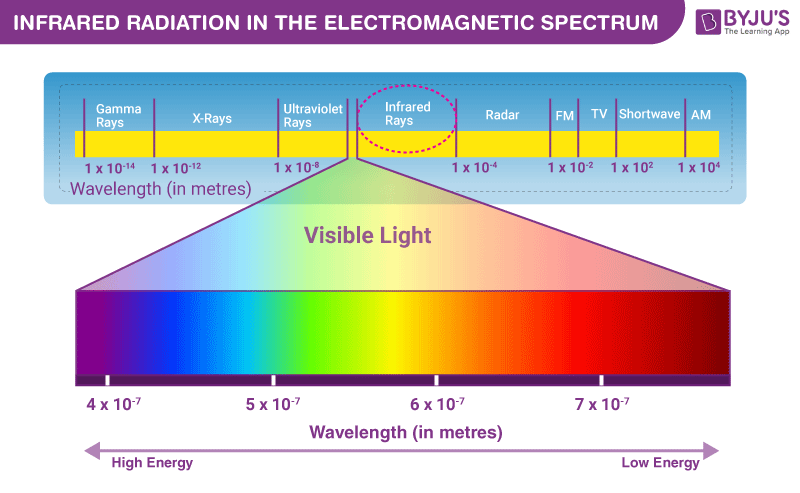What Are Infrared Rays?
Infrared waves are also referred to as heat or thermal waves. This is because they have a heat-inducing property. Sometimes infrared rays are used in applications where heat production is required, like in infrared heaters or for therapeutic purposes where a patient requires physical therapy.

These waves have a wavelength range between 710 nm to 1mm. Sometimes infrared rays themselves are classified as near-infrared and far-infrared rays. Near-infrared rays are used in electronic applications like TV remote sensors and photography. Their applications can be somewhat similar to visible light applications since their wavelength ranges are close by. Far infrared rays are more thermal in nature. Anything that generates heat gives out far-infrared radiation. Even the human body (at 37 deg-C) gives off infrared radiation of around 800nm wavelength. In the next section, let us look at the properties and application of infrared radiation.
Properties of Infrared Radiation
Given below in a table are a few properties of infrared radiation.
| Origin | Alteration in the movement of electrons |
| Wavelength Range | 710 nm to 1mm |
| Frequency | 430 THz – 300 GHz |
| Wave type | Transverse Wave |
| Speed | 3 ×108 m/s |
| Refraction | Exhibits the property of refraction |
| Thermal Properties | Exhibits a heat-inducing property |
| Absorption and Reflection | Infrared radiation can be absorbed or reflected depending on the nature of the surface that it strikes. |
Application of Infrared Radiation
Infrared radiation is used in applications like remote sensing, which is used in weather applications. All bodies produce some thermal energy and based on this property, infrared rays have a wide variety of operations in covert operations as well. Infrared rays are also used in the field of astronomy.
Infrared light can also be called thermal light. The light which falls on your body when you sit near a campfire or even the light of the sun, these kinds of lights also emit some thermal energy which causes you to feel the heat. Infrared heaters also come under this, where they use infrared radiation to generate thermal energy.
Frequently Asked Questions – FAQs
What is infrared radiation?
List some properties of infrared radiations.
- Infrared radiation, like all radiation, travels at a speed of 299,792,458 metres per second.
- Infrared light can exhibit both wave and particle nature at the same time.
- Depending on the nature of the material that infrared radiation strikes, it can either be absorbed or reflected.
- Infrared radiation increases the thermal energy in particles.
What is a quantum type infrared detector?
What are electromagnetic waves?
What is thermal energy?
Stay tuned with BYJU’S to fall in love with learning!

Comments